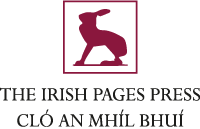Ben Dorain: a conversation with a mountain – PNR review November/December 2021
Garry MacKenzie’s refreshingly original Ben Dorain can only summon before us the shade of Dhonnchaidh Bhain, as he was in Gaelic, known otherwise as Duncan Bàn MacIntyre. MacIntyre has long been celebrated in Scotland (but never enough) fnor hisd above all the virtuosic ‘Moladh Beinn Dobhrain’ – ‘Praise of Ben Dorain’, an intricately figured work of intensely visualised detail, composed ‘To the tune of a Pibroch’ – literally ‘pipe music’ – atonal bagpipe music, known as ‘ceol more’, ‘big music’.
‘Moladh Beinn Dobhrain’ is all the more astonishing in being in its making a 500 line-plus feat of memory by a man who could neither read nor write. The situation is Homeric and the highly mellifluous song itself classical and impersonal, yet expressive of intense passion. John Tongue in his landmark study The Arts of Scotland (1938), referring to the absence of the humanist element in Celtic visual art, suggested that its ‘filigree technique’ characterises the ‘consummate and intricate…art-music’ of the pibroch. That amounts to saying that Celtic oral, visual, and musical culture enjoyed common forms of coherence. As we stalk the poet through his poem, the assymetries of a pibroch mark our step, switching from ‘urlar’ (theme) to ‘siubhal’ (variation) and in this case ‘an crundludh’ (finale), preceded by again an ‘urlar’. I believe this is about as echt as it gets.
The key period in Bàn MacIntyre’s life of present interest was passed as a forester in the service of the Earl of Breadalbane, in Coire-Cheataich, and Benn-Dourainn, Argyllshire. That work involved the stalking and shooting of deer. This interaction, this dance of death, between man and deer, with his rifle between them both, is at the heart of the poem. Another of his poems ‘Song to a Gun Named Nic Coisem’ extends our understanding of the relationship. Daily and season exposure to the terrain of Ben Dorain made an acute and sensitive naturalist of the poet. We should beware being presentists and calling him even so much as a proto-ecologist. It is surely tempting, though, as it is with John Clare.
To aspire to follow anywhere near his footsteps is a courageous thing. But this in his fashion is what Garry MacKenzie has done in a highly innovative, ecologically aware way, in territory he too knows intimately and belongs I, though not with rifle in hand. He stalks poetry instead. Together they dance a dance not of death but of life. We may burden the exercise with environmental politics if we wish, but that would be a mistake, as Kathleen Jamie makes clear in her note on the poem. The poem is that rare thing these days, a celebration of the wild in and for itself. His bagpipe music is as much visual as aural, and plainsong more the character of his speech. The poem has Poundian resonance and Mallarméan throws of the dice. It plays with ‘adjacencies’, on a principle attributed to Jorie Graham. There are passages of text running parallel, and one or two side glosses, referencing sources as diverse as Darwin and T.H. Clutton-Brock. So it is a poem for eye and ear, with many moments that capture exquisitely the terrain, and the ‘Deer on the High Hills’ in Ian Crichton-Smith’s formulation in all their magic. `Wallace Stevens gave us thirteen ways of looking at a blackbird. Garry MacKenzie discovers as many and more ways of not only looking at but seeing, and seeing into, the Ben Dorain of today, and its hinds and stags. Irish Pages Press will find it hard to follow this fine book with anything half as good, but let’s hope they will succeed, for here too is not only a new poet to most of us, but a new imprint. They couldn’t be worthier of each other. The two enjoy uncommon forms of coherence.
By Andrew McNeillie


